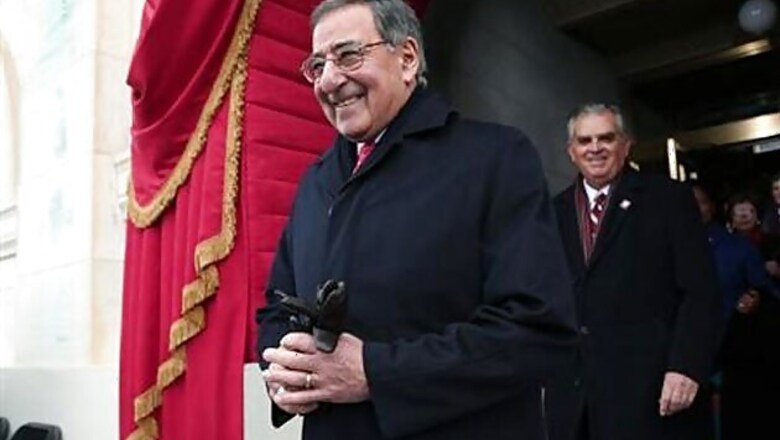
views
Washington: Leon Panetta, who as CIA director oversaw the US operation that killed al Qaeda leader Osama bin Laden, said the job could have been done without resorting to controversial interrogation methods that some have said constitute torture.
The outgoing defense secretary, in remarks aired Sunday on the NBC program "Meet the Press," said there had been many pieces to the "puzzle" solved to find bin Laden, who was held responsible for the September 11, 2001, attacks on New York and the Pentagon.
"Yes, some of it came from some of the tactics that were used at that time - interrogation tactics that were used," said Panetta, who headed the Central Intelligence Agency (CIA) from 2009 until he became US defense secretary on July 1, 2011.
"I think we could have gotten Bin Laden without that," Panetta added in response to a question about what the interviewer called enhanced interrogation or torture.
Panetta did not elaborate on how this might have been done, but said most of the intelligence used to find bin Laden had been stitched together without resort to enhanced interrogation.
He was commenting on the 2012 film "Zero Dark Thirty," which portrayed the hunt that led to the successful May 2, 2011, raid on the al-Qaeda leader's hideout in Pakistan.
Some CIA veterans have defended the use of harsh techniques such as sleep deprivation, hypothermia, stress positions, slapping and waterboarding, to obtain information that helped get bin Laden. Waterboarding, in which a drowning sensation is inflicted on a captive, is often described as torture.
Jose Rodriguez, who played a key role in setting up and administering the CIA's "enhanced interrogation" program, recently traced an early break in the bin Laden hunt to a detainee subjected to what Rodriguez called enhanced interrogation short of waterboarding.
From this detainee came, in 2004, the first substantive information about bin Laden's courier, according to Rodriguez, author of "Hard Measures: How Aggressive CIA actions after 9/11 Saved American Lives."
"After obtaining this essential lead on the courier, years of meticulous intelligence work followed," he wrote in a January 3 essay in the Washington Post.
Having covert prisons abroad known as black sites and "compliant terrorists," the CIA was able to go back to detainees to check leads, ask follow-up questions and clarify information, said Rodriguez, head of the CIA's Counterterrorism Service from 2002 to 2004 and then director of the National Clandestine Service until late 2007.
"Without that capacity, we would have been lost," he wrote.




















Comments
0 comment